Also by James Holland
Non-fiction
FORTRESS MALTA
TOGETHER WE STAND
HEROES
ITALYS SORROW
THE BATTLE OF BRITAIN
DAM BUSTERS
AN ENGLISHMAN AT WAR
THE RISE OF GERMANY
THE ALLIES STRIKE BACK
BIG WEEK
NORMANDY 44
Fiction
THE BURNING BLUE
A PAIR OF SILVER WINGS
THE ODIN MISSION
DARKEST HOUR
BLOOD OF HONOUR
HELLFIRE
DEVILS PACT
Map Key
(See also the Glossary of Terms and Abbreviations on )
A LLIED UNITS
 A XIS UNITS
A XIS UNITS
S TANDARD MILITARY SYMBOLS
I = Company
II = Battalion
III = Regiment
X = Brigade
XX = Division
XXX = Corps
XXXX = Army
XXXXX = Army Group
O THER ABBREVIATIONS
Air = Airborne
Arm = Armoured
bde = brigade
bn = battalion
Br = British
Can = Canadian
CB = Coastal Battalion (Italian)
CC = Combat Command
CD = Coastal Division (Italian)
Cdo = Commando
FA = Field Artillery
Fall = Fallschirmjger
GM = Gruppo Mobile
gp = group
HG = Hermann Gring (Panzer Division)
Inf = Infantry
It = Italian
LCI = landing craft, infantry
LST = landing ship, tank
LZ = landing zone
ME = Middle East
MG = Mobile Group
MT = motor transport
ops = operations
Para = Parachute
PG = Panzer Grenadier
Pz = Panzer
SRS = Special Raiding Squadron
TF = Task Force
TG = Tactical Group
US = United States
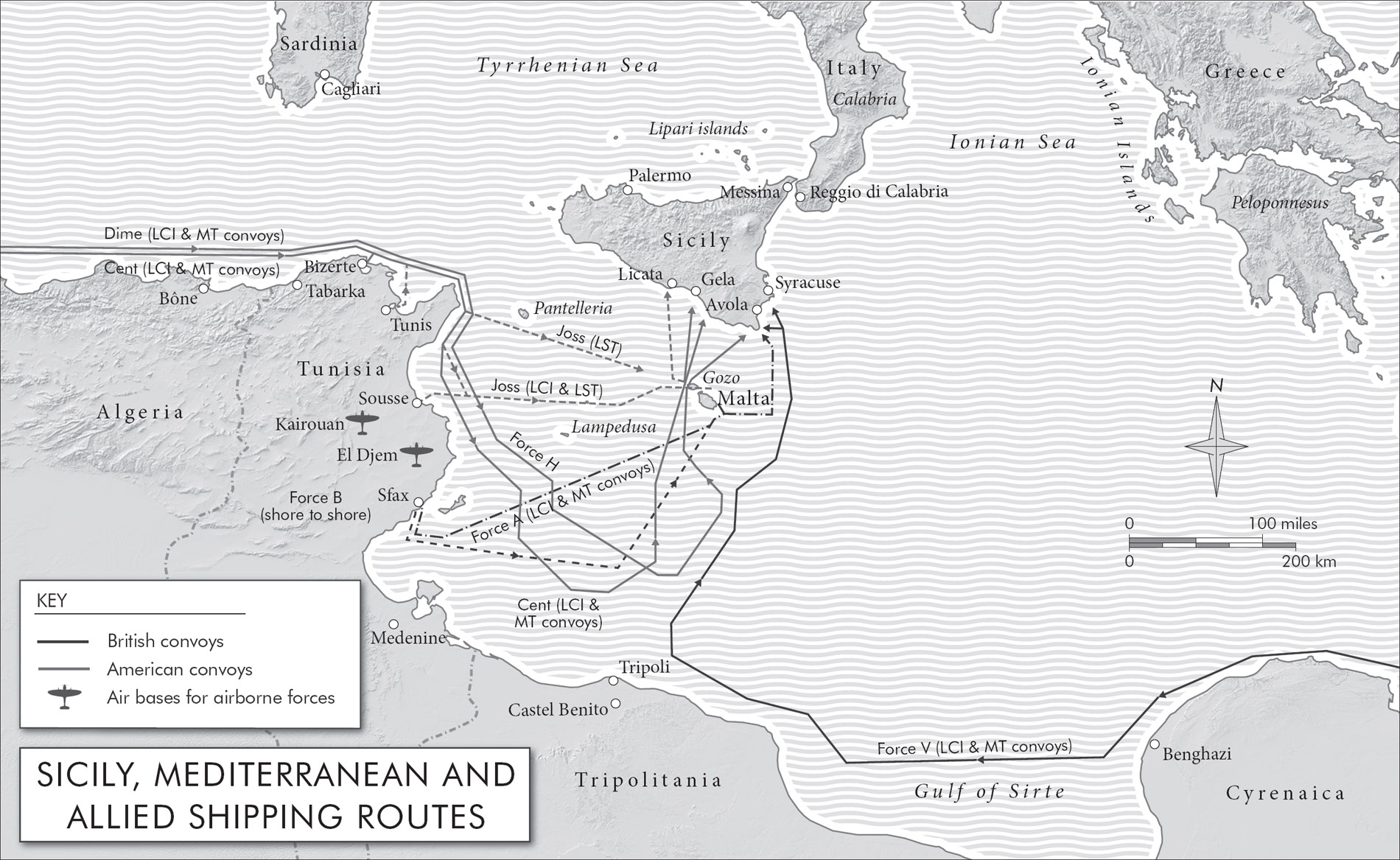
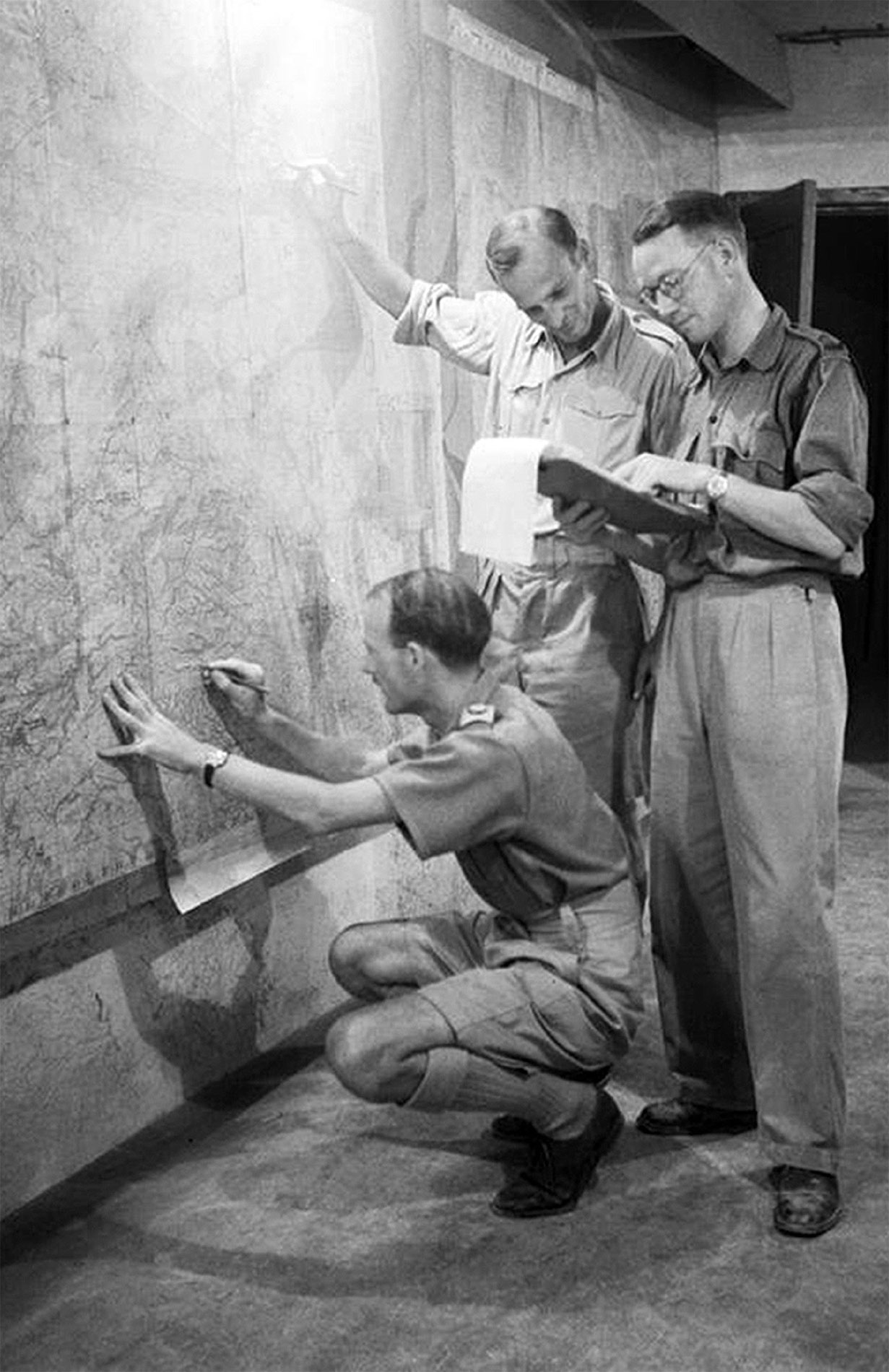
Planning in Lascaris, Malta
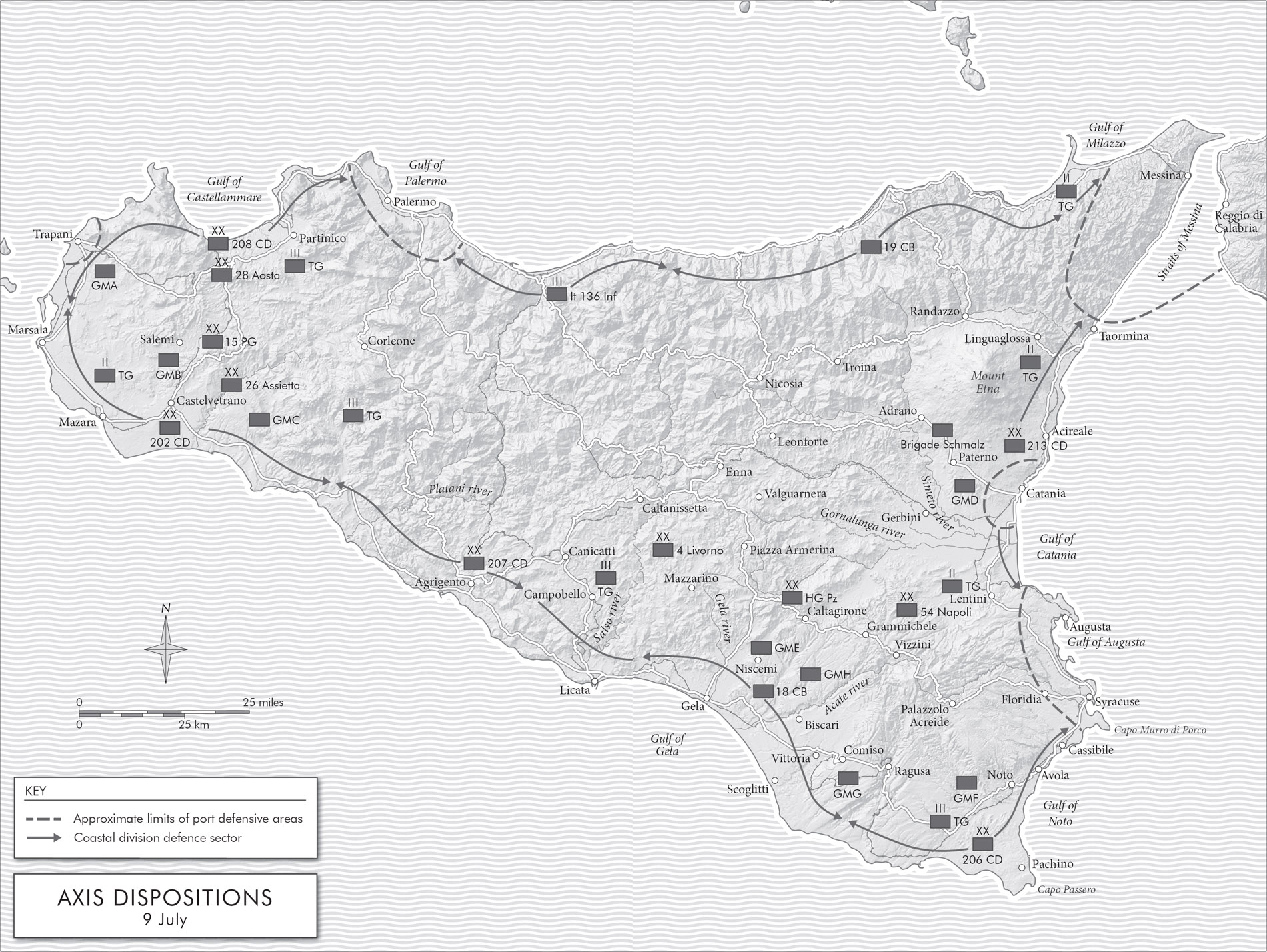
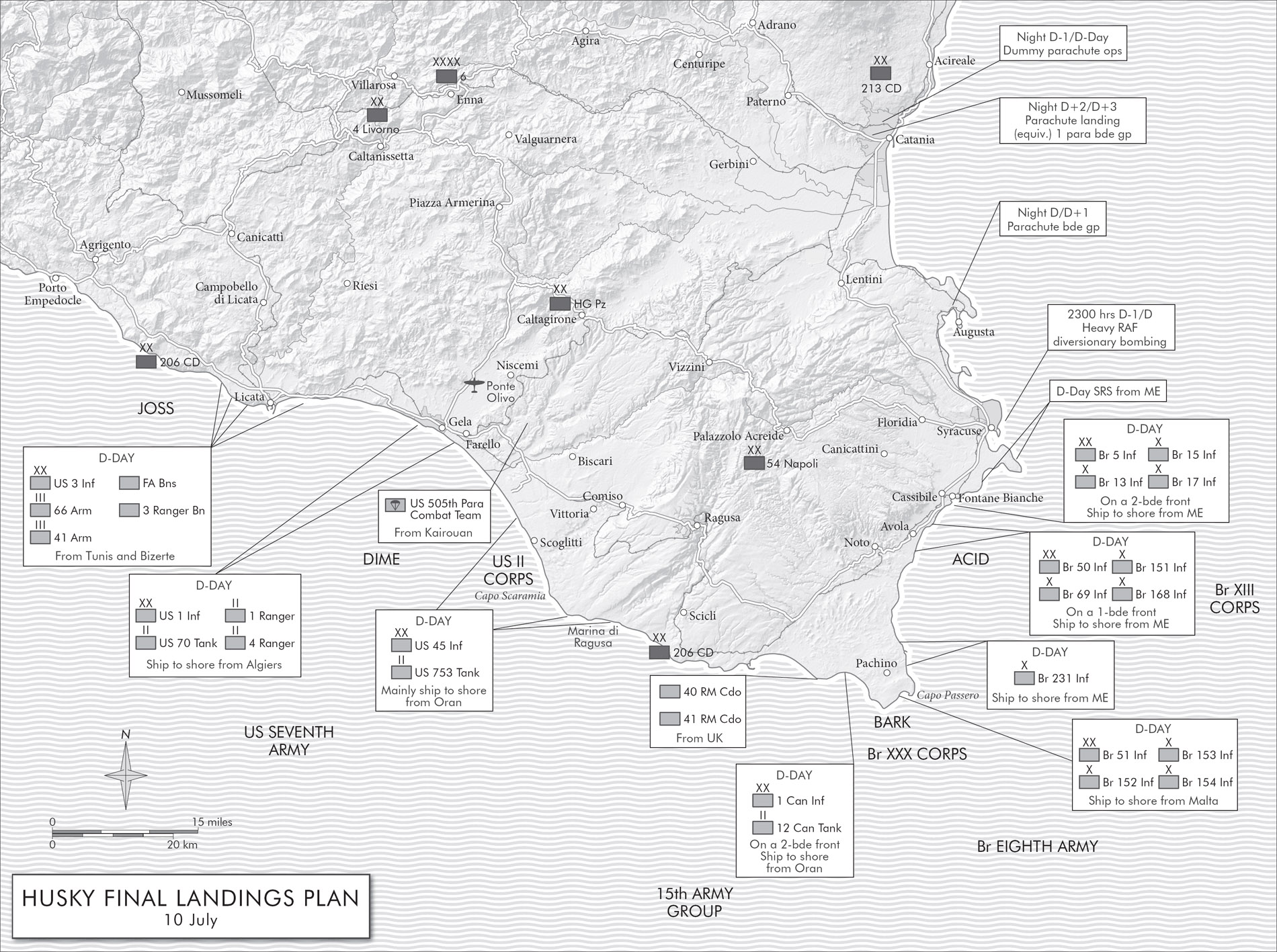
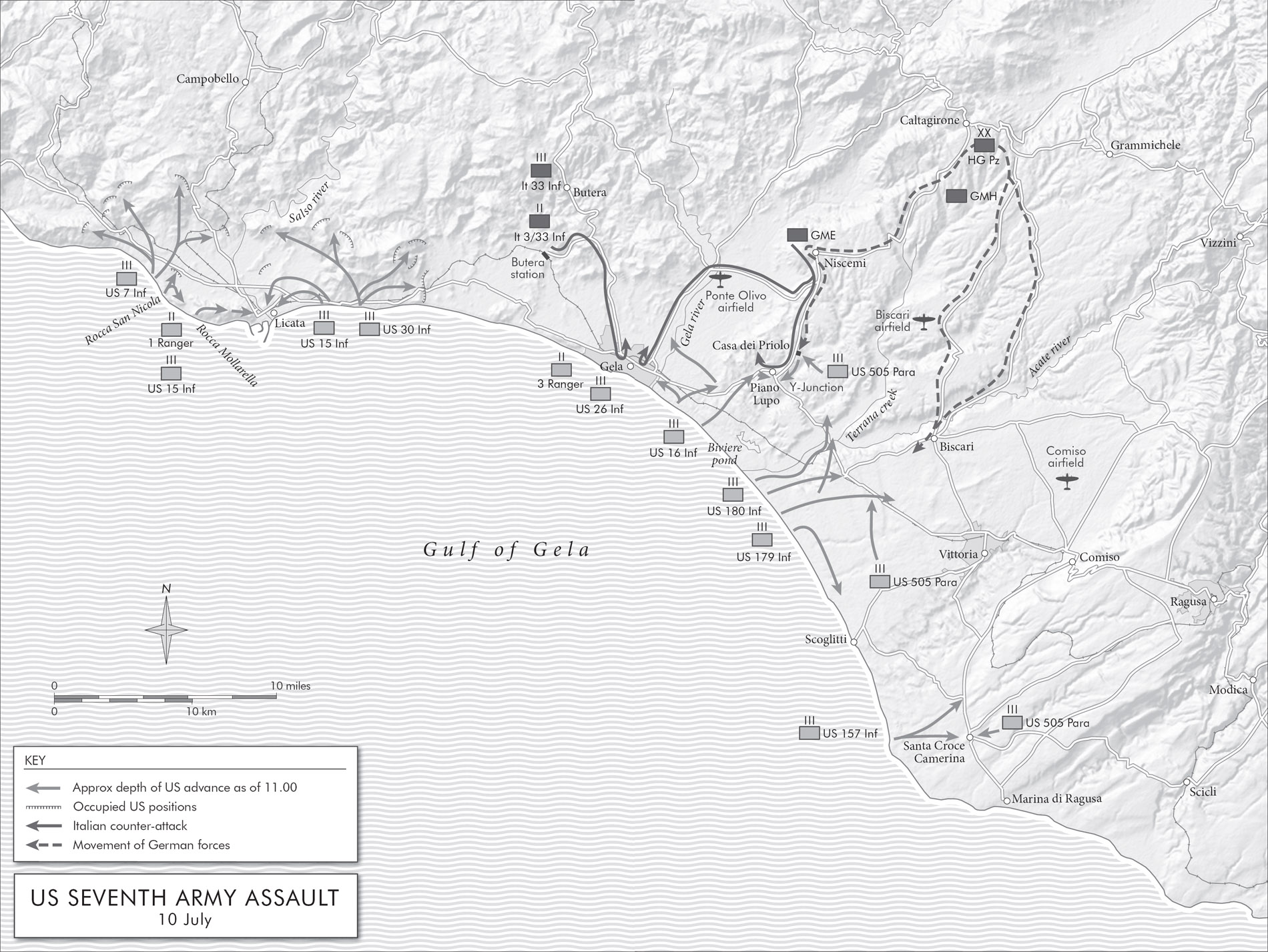
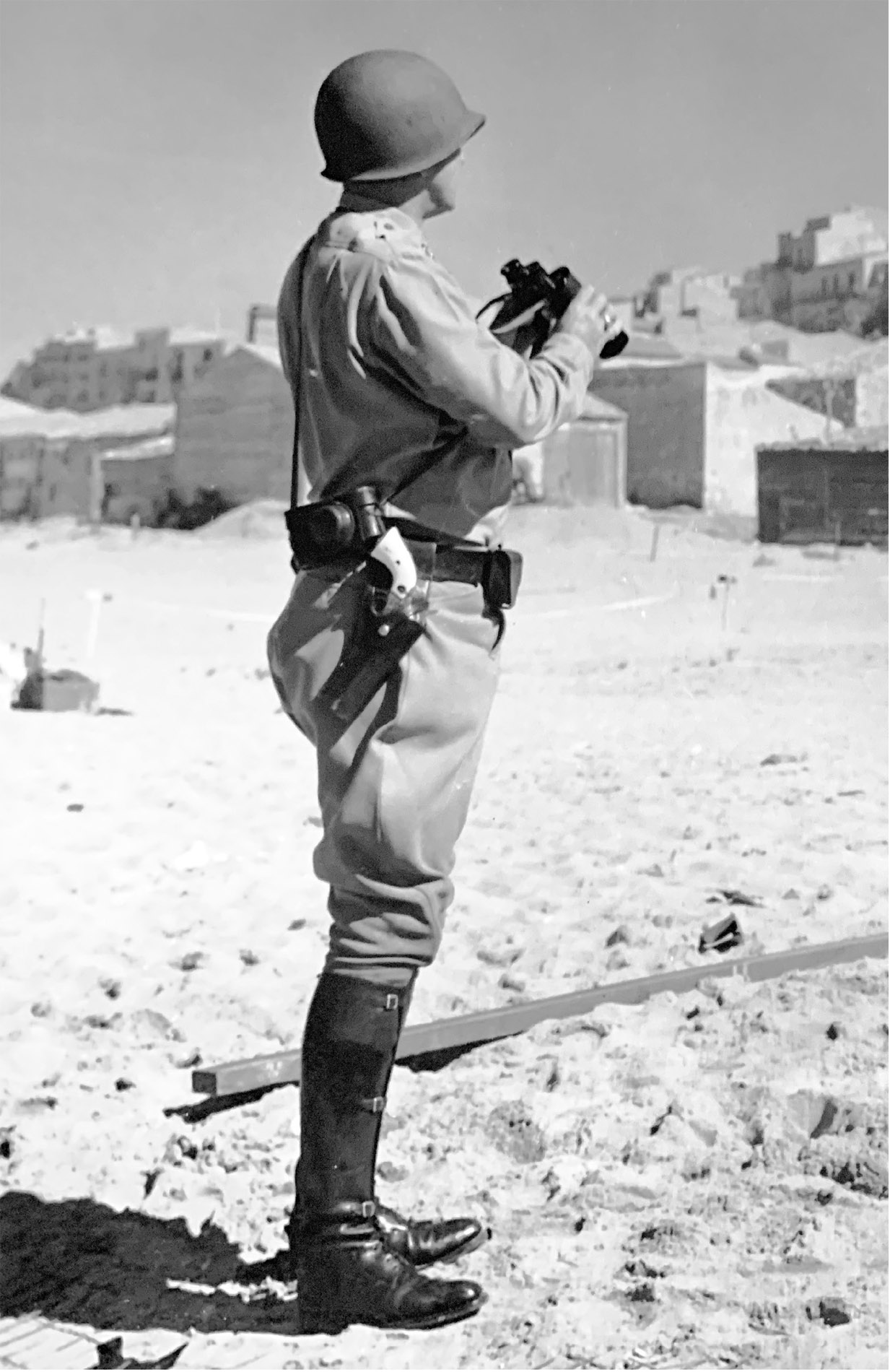
Patton on the beach at Gela
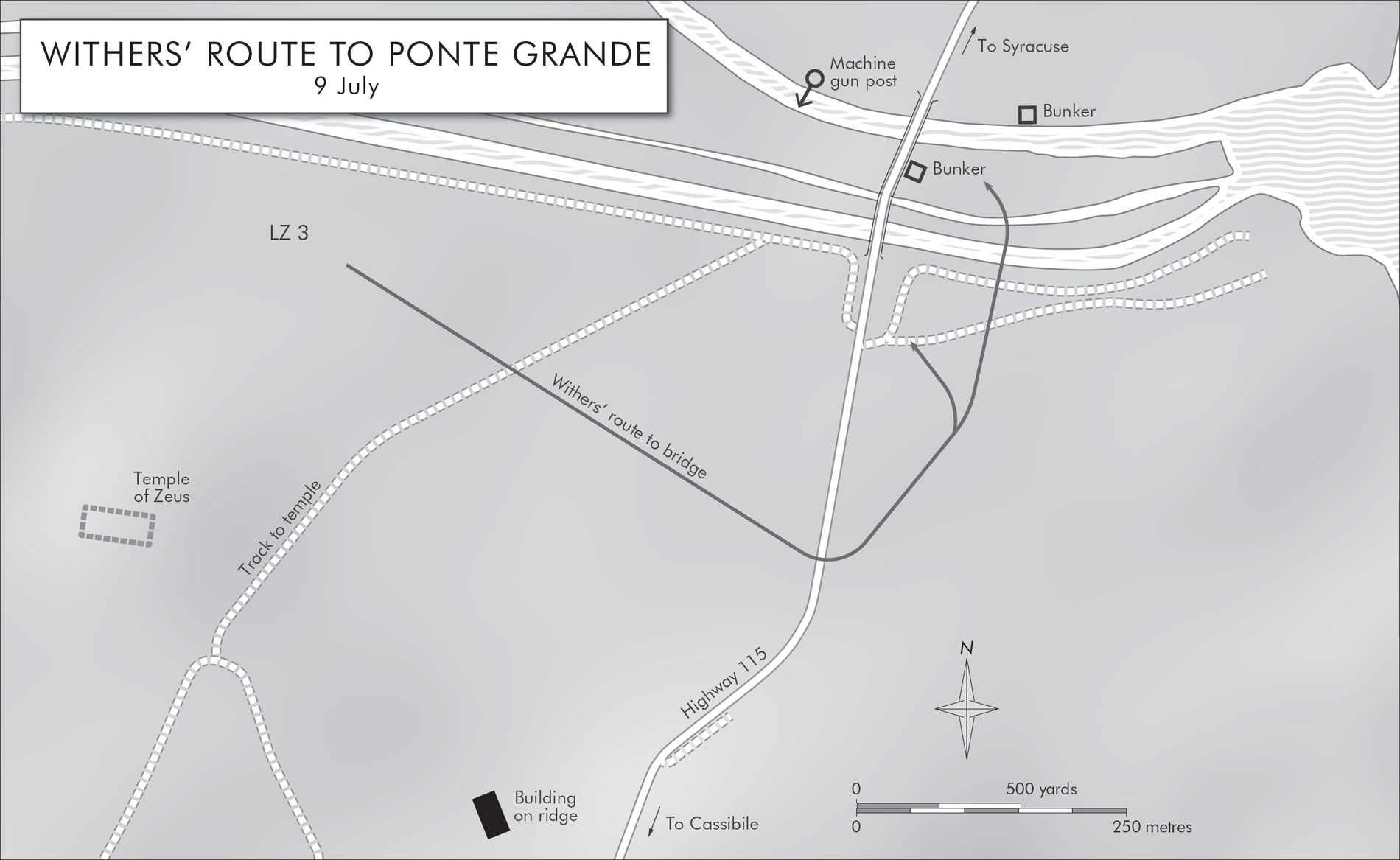

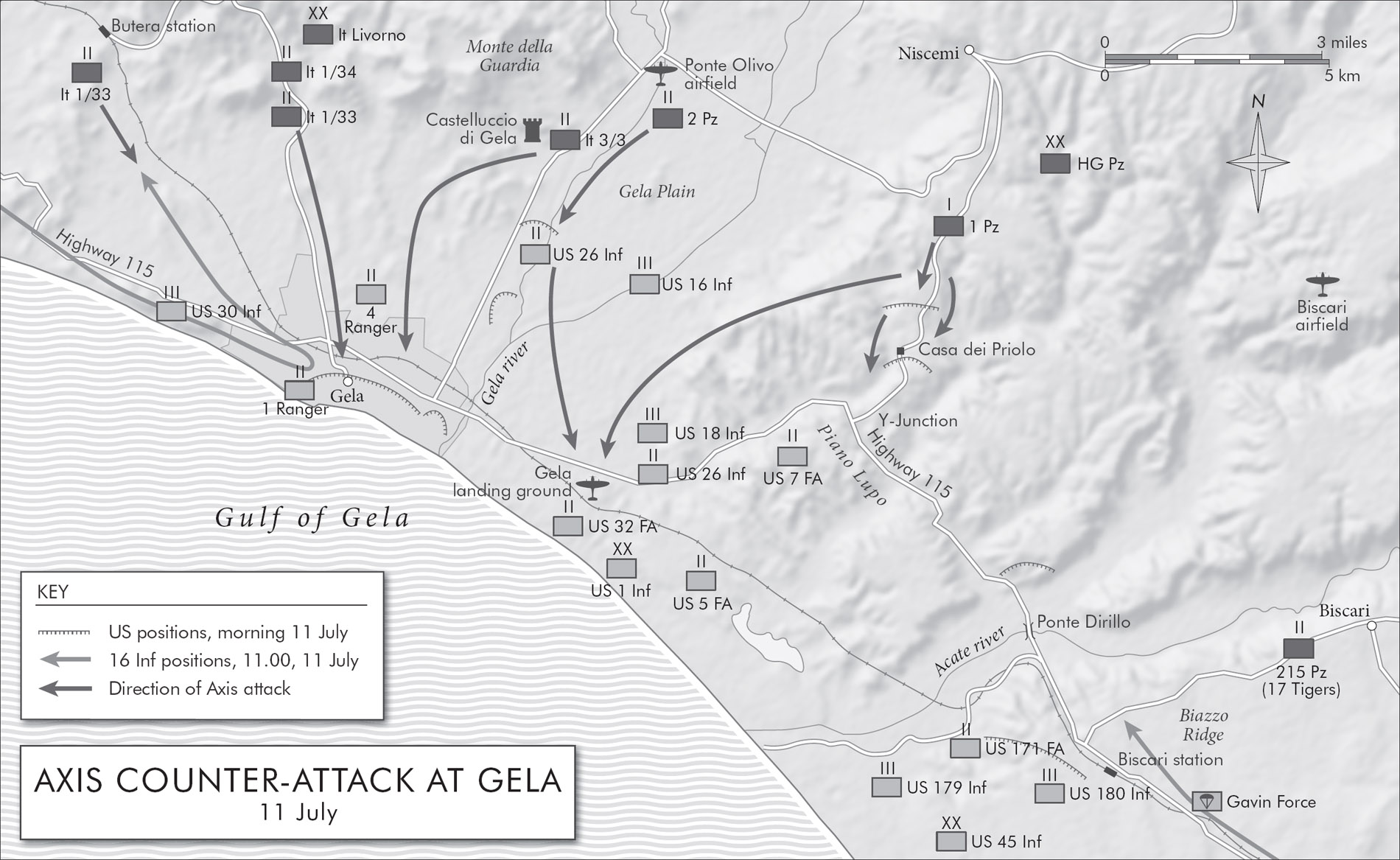
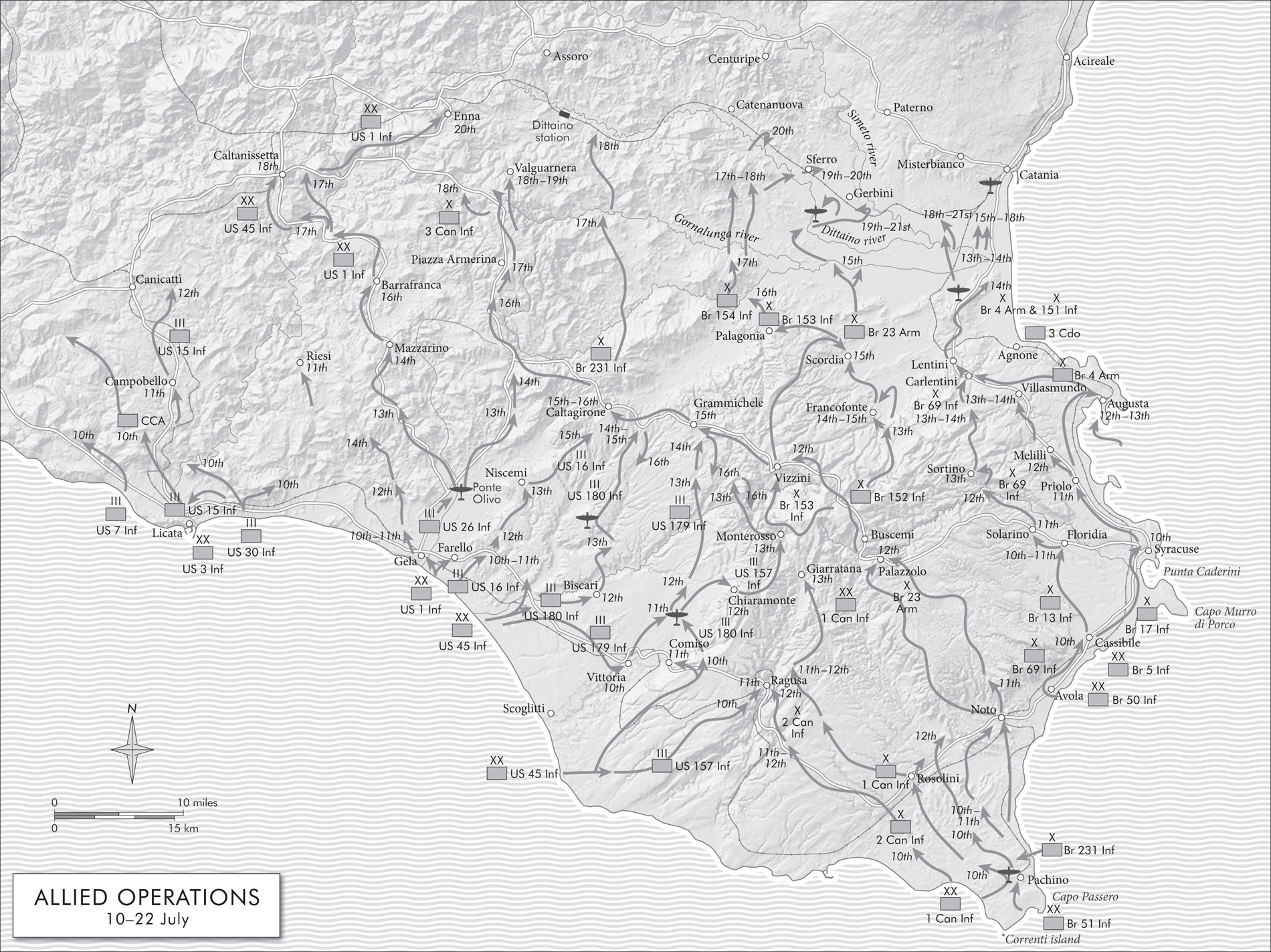

Primosole Bridge from the air
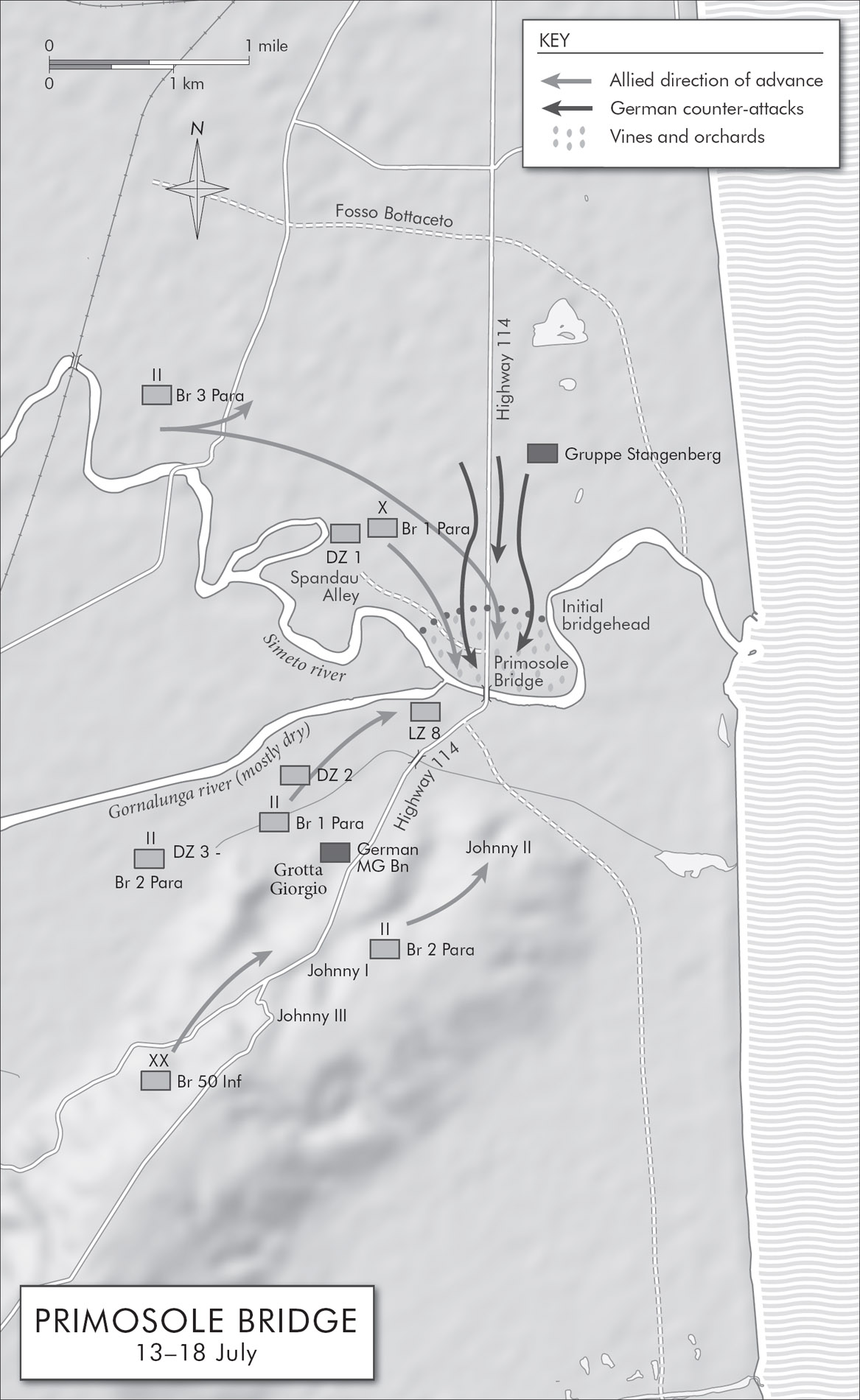
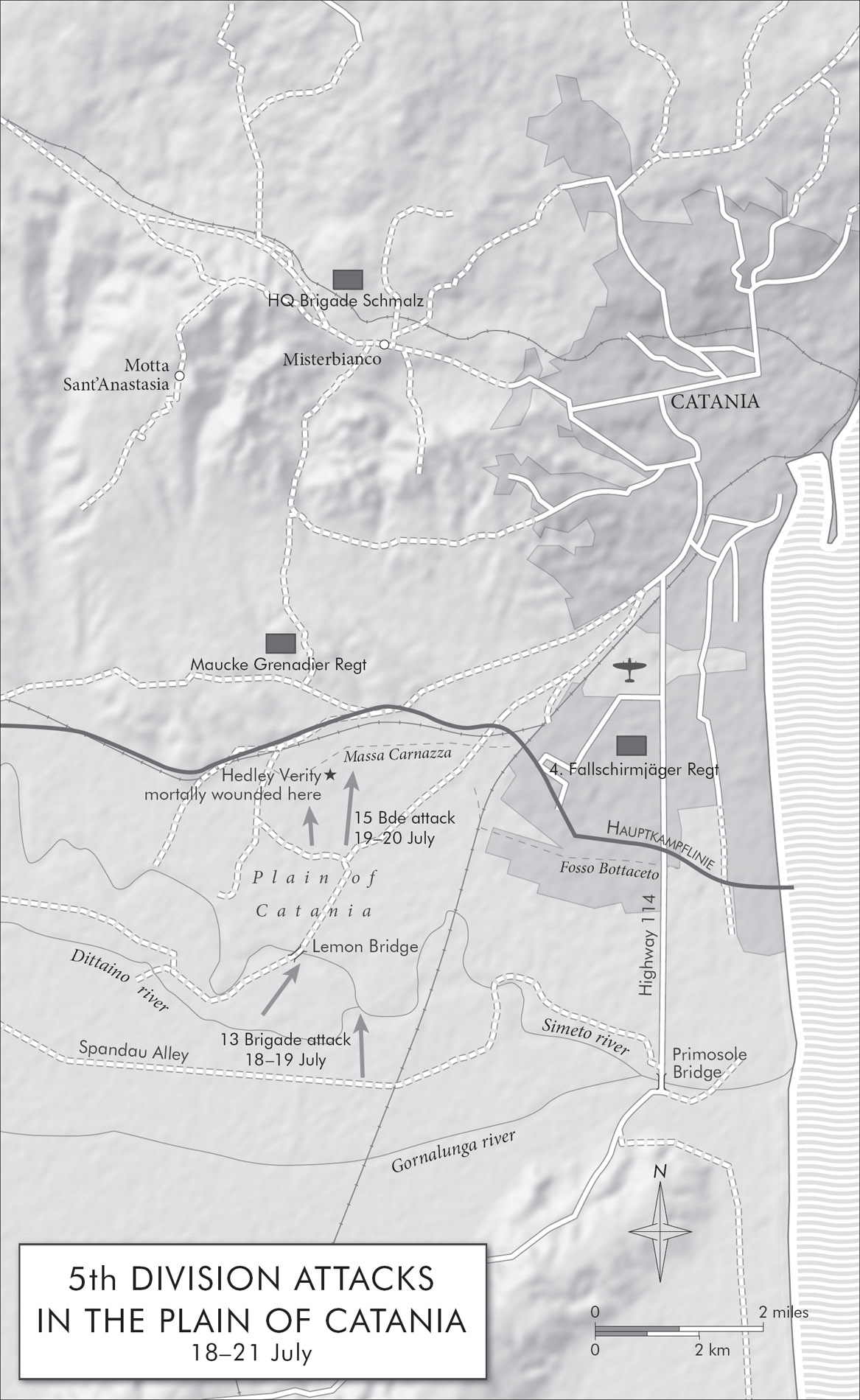
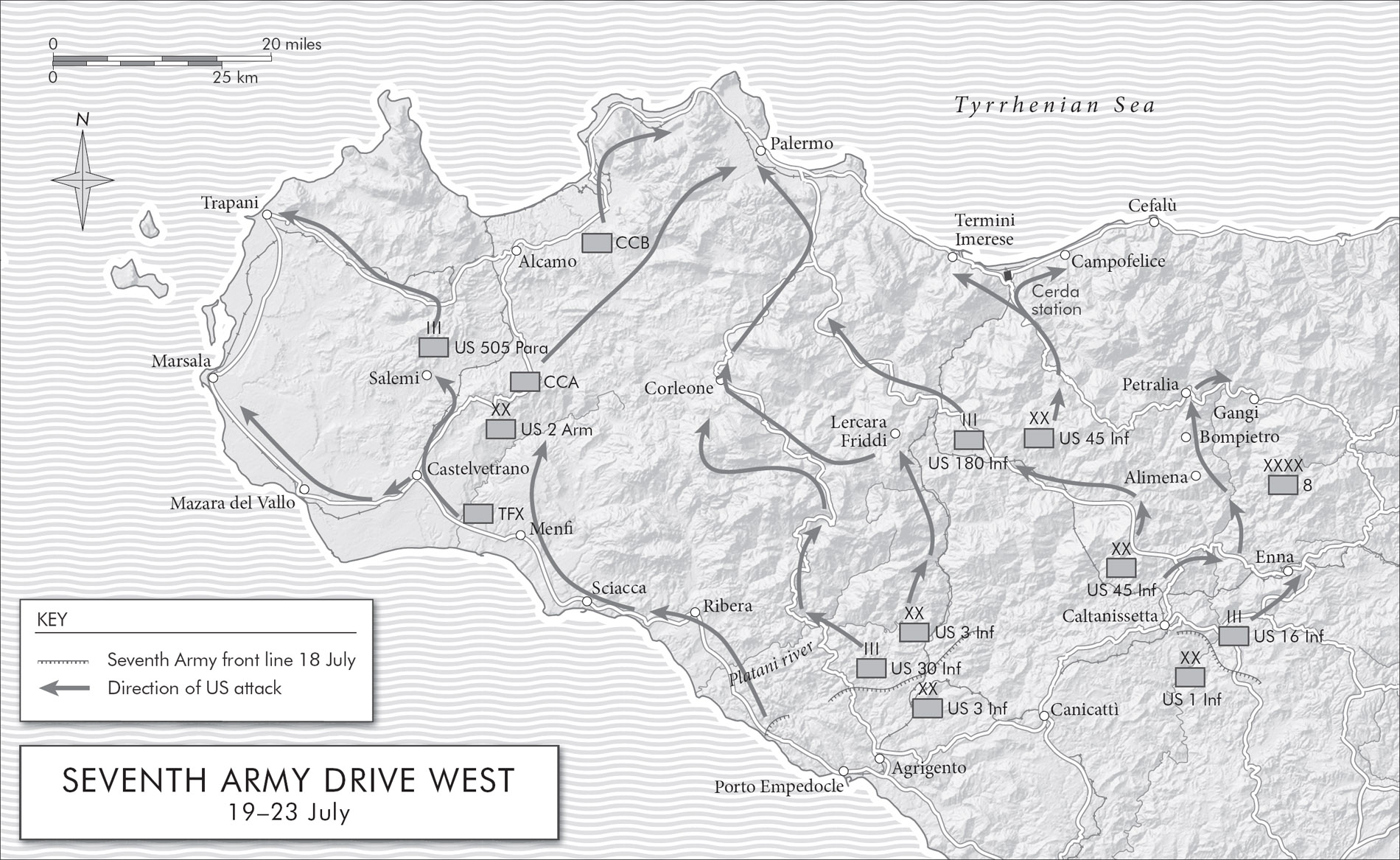
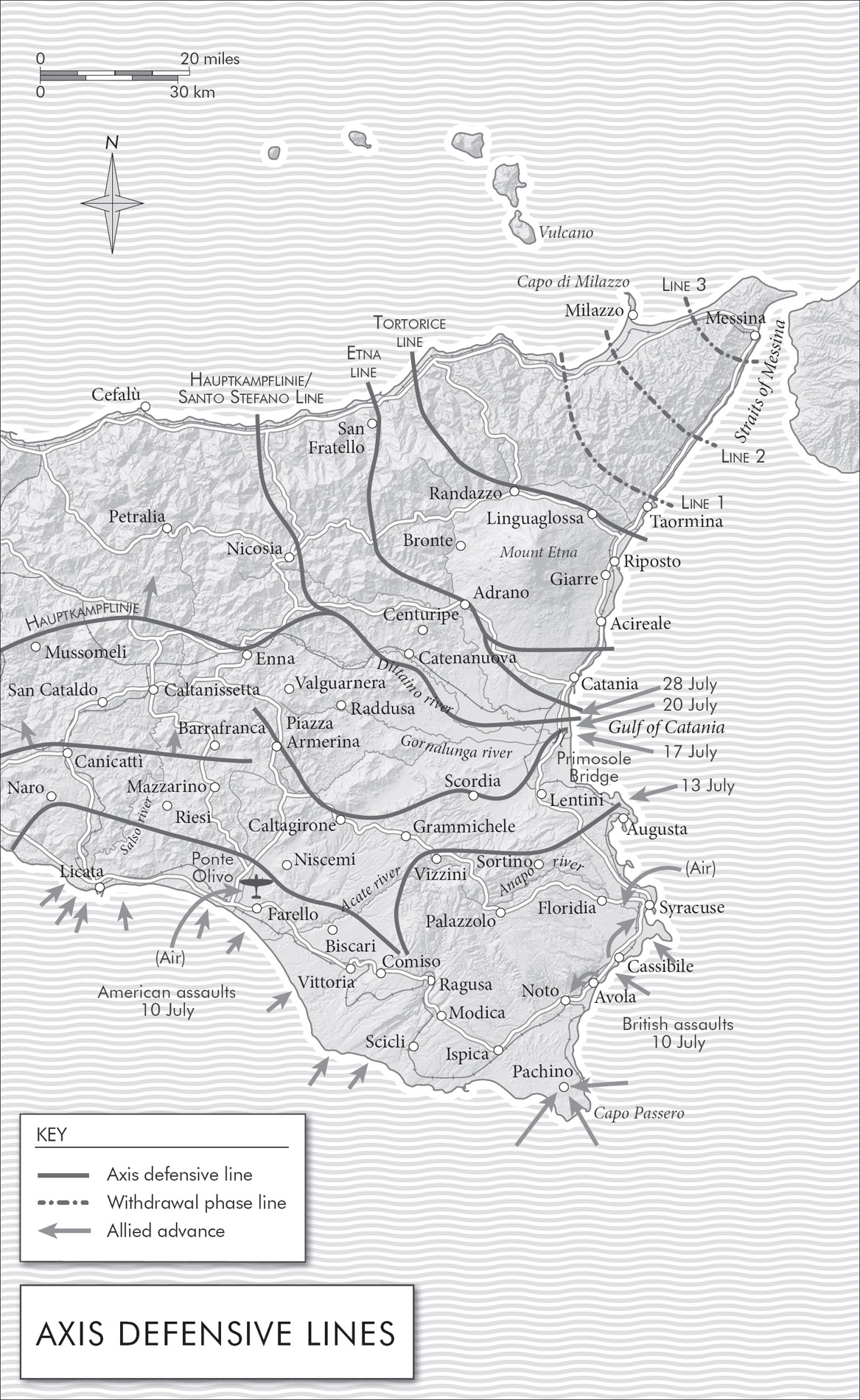
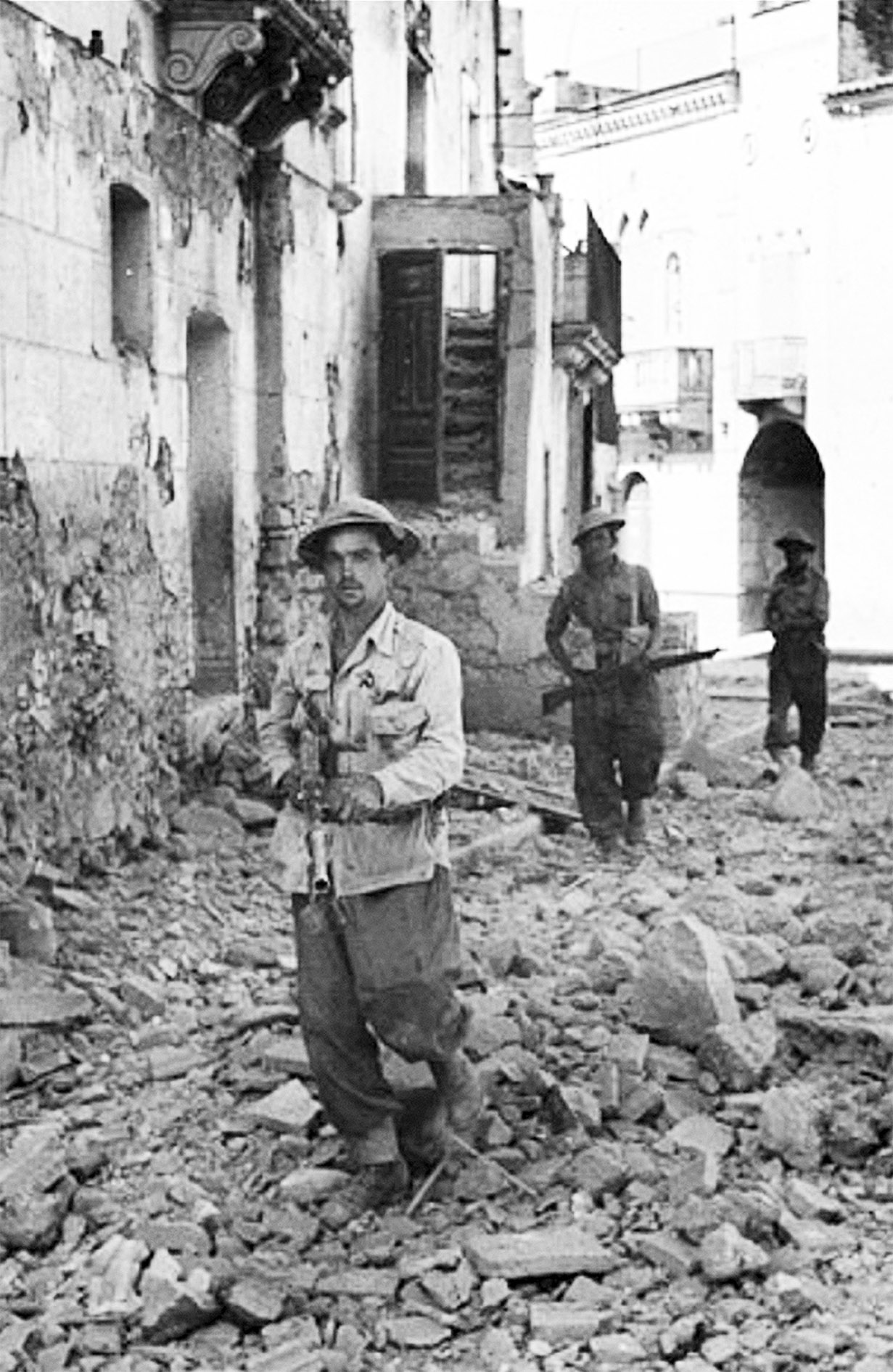
6th West Kents in Adrano
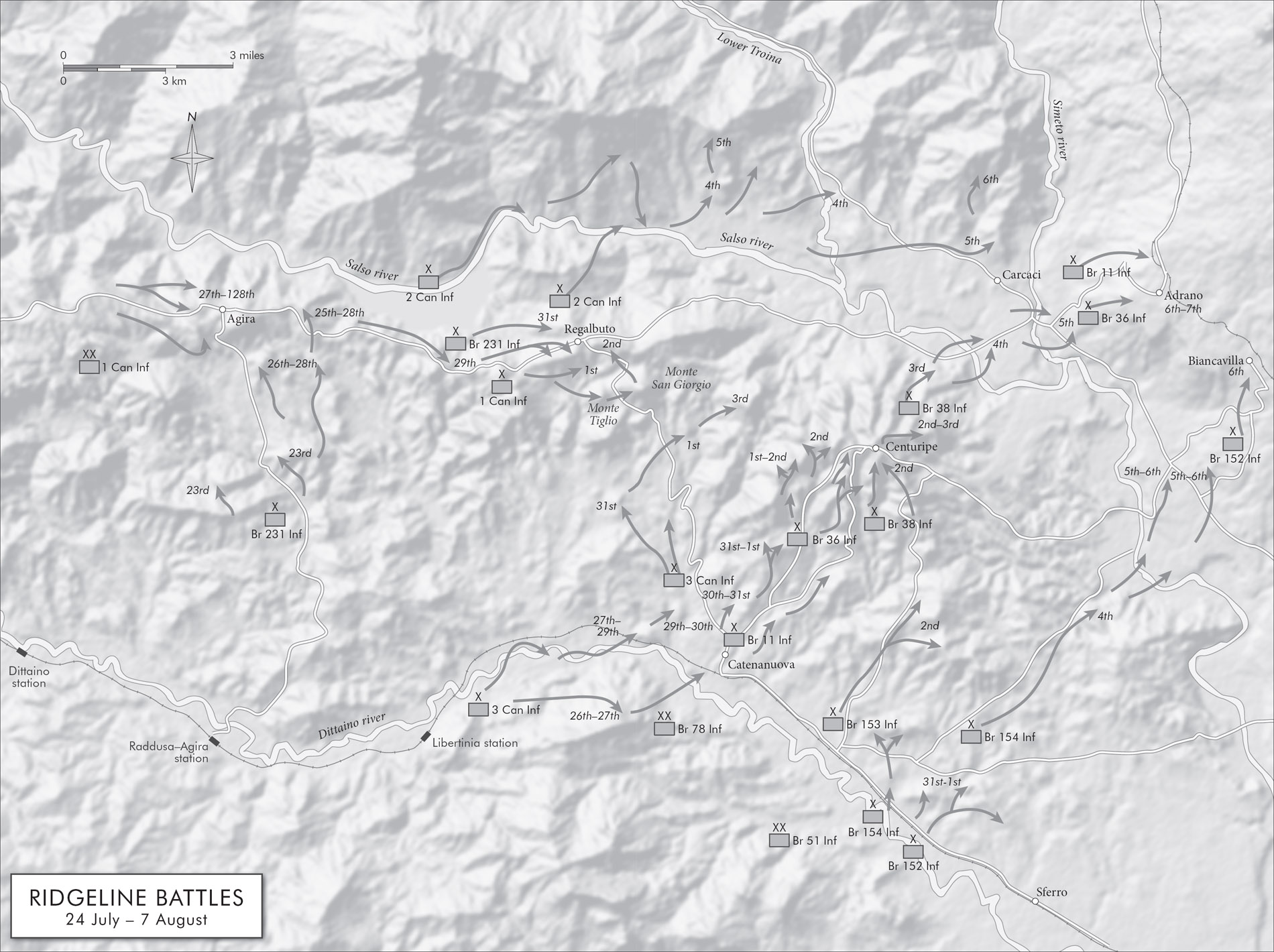
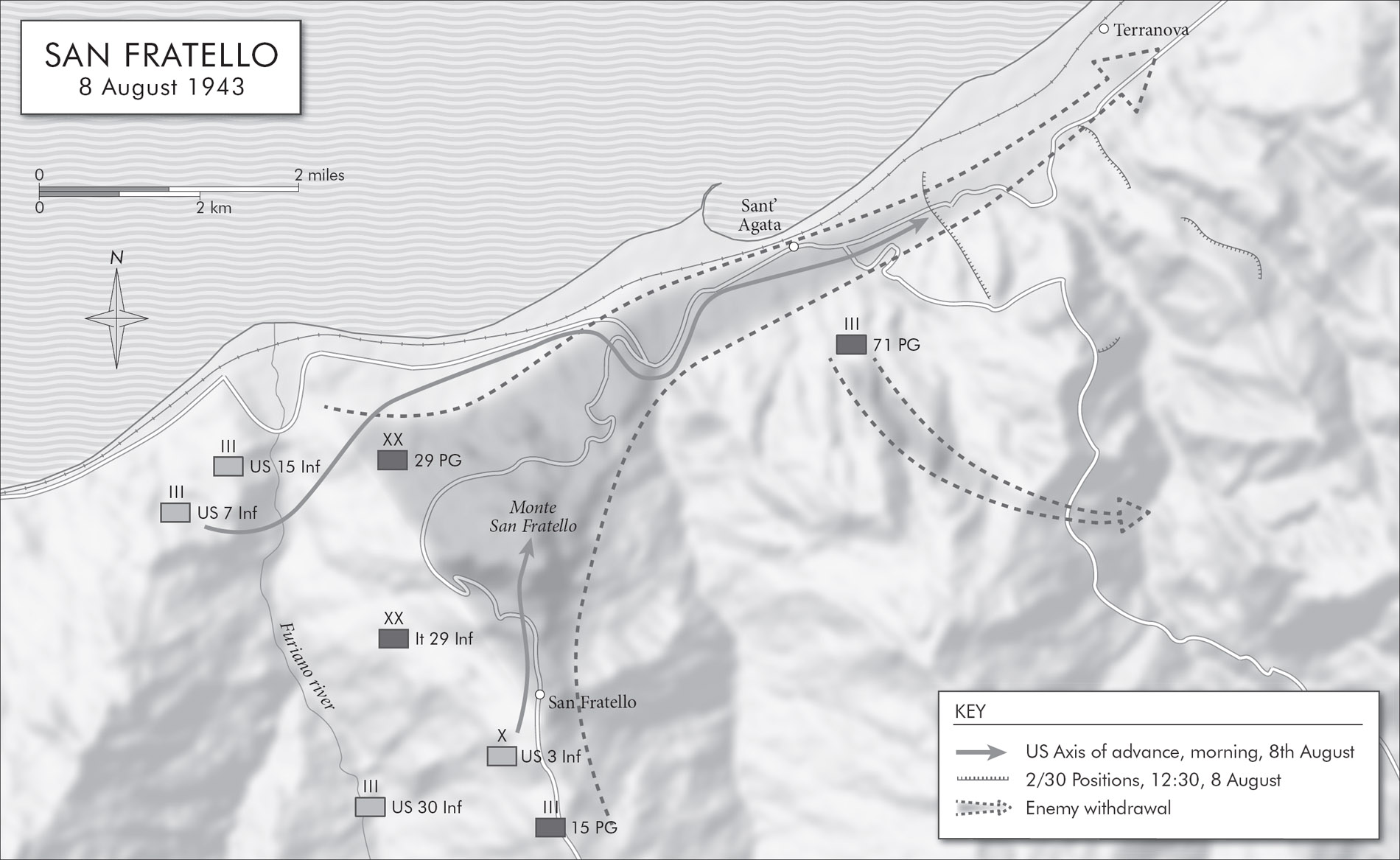
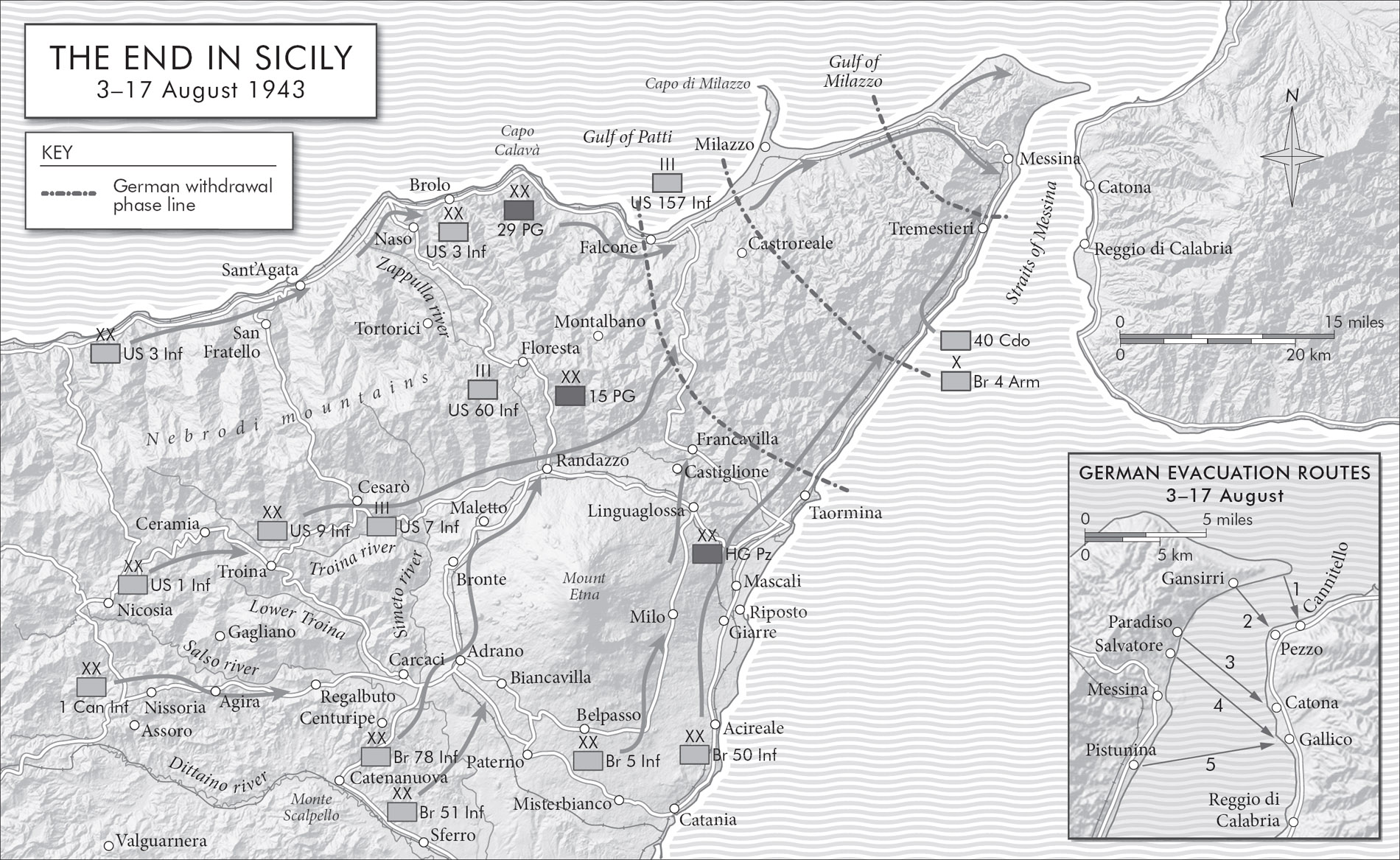
James Holland
SICILY 43
The First Assault on Fortress Europe

Atlantic Monthly Press
New York
Copyright 2020 by Griffon Merlin Ltd
Maps drawn by Lovell Johns Ltd
Jacket photograph: American rangers move through Porto Empedocle on the south coast of Sicily on July 27, 1943 Associated Press
All rights reserved. No part of this book may be reproduced in any form or by any electronic or mechanical means, including information storage and retrieval systems, without permission in writing from the publisher, except by a reviewer, who may quote brief passages in a review. Scanning, uploading, and electronic distribution of this book or the facilitation of such without the permission of the publisher is prohibited. Please purchase only authorized electronic editions, and do not participate in or encourage electronic piracy of copyrighted materials. Your support of the authors rights is appreciated. Any member of educational institutions wishing to photocopy part or all of the work for classroom use, or anthology, should send inquiries to Grove Atlantic, 154 West 14th Street, New York, NY 10011 or
Every effort has been made to obtain the necessary permissions with reference to copyright material, both illustrative and quoted.
First Published in Great Britain in 2020 by Bantam Press, an imprint of Transworld Publishers
Published simultaneously in Canada
Printed in the United States of America
First Grove Atlantic hardcover edition: November 2020
Typeset in 11.25/14 pt Minion Pro by Jouve (UK), Milton Keynes
Library of Congress Cataloging-in-Publication data is available for this title.
ISBN 978-0-8021-5718-8
eISBN 978-0-8021-5720-1
Atlantic Monthly Press
an imprint of Grove Atlantic
154 West 14th Street
New York, NY 10011
Distributed by Publishers Group West
groveatlantic.com
For my oldest friend and best man, Giles Bourne
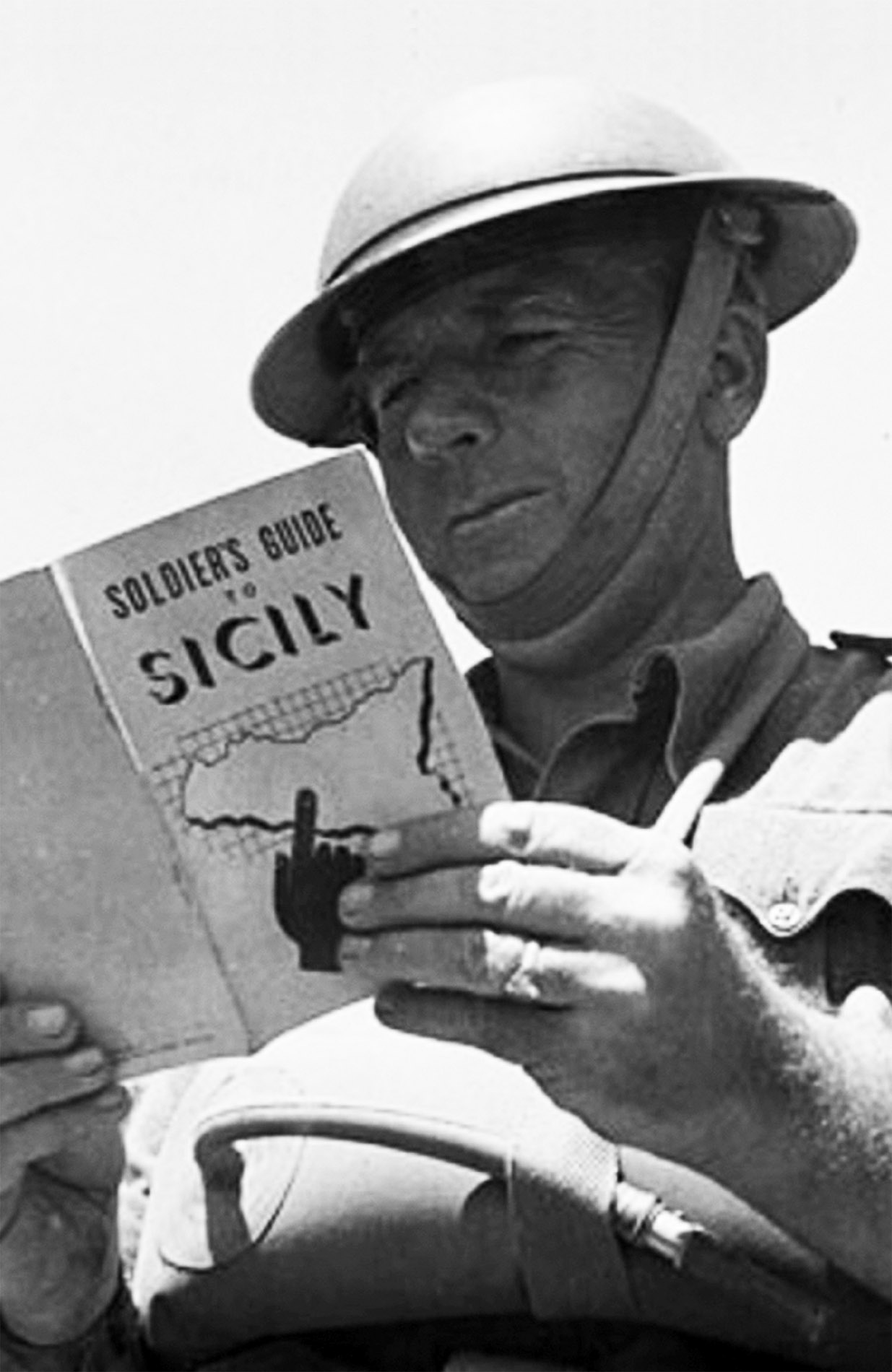
Note on the Text
Writing a campaign history such as this is a complicated undertaking. Although dealing with American, British, Canadian, German and Italian units across the armed services, Ive tried to keep the numbers of unit names as low as possible. To help distinguish one side from another, I have used a form of vernacular, styling German and Italian units more or less as they would be written in German and Italian not to be pretentious in any way, but just to reduce the potential for confusion. Having said that, it seemed to me that to describe a Tiger tank company as the 2. Schwere Panzerkompanie was perhaps taking this too far, so I have called it more simply 2. Heavy Panzer Kompanie.
For those who are not familiar with the scale of wartime units and the numbers involved, the basic fighting formation on which the size of armies was judged during the Second World War was the division. German panzer divisions were an all-arms formation of motorized infantry, artillery and tanks; panzer-grenadier divisions had fewer panzers tanks and more motorized infantry: a grenadier was simply an infantryman who was provided with motor transport to get from A to B. Infantry divisions had much less motorization by 1943 as fuel and other shortages were increasingly keenly felt within the Reich.

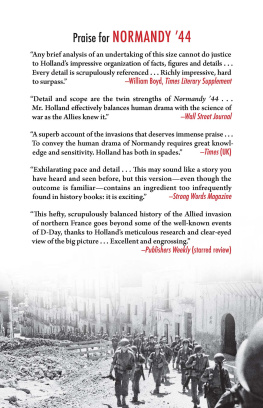
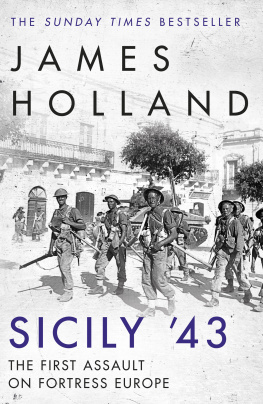
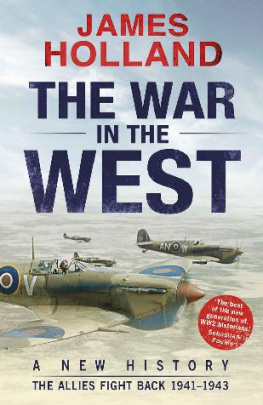


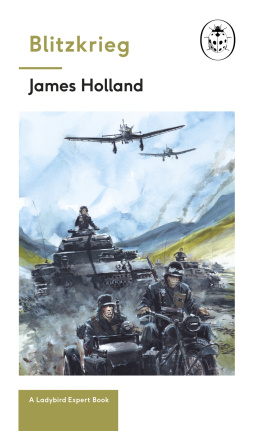


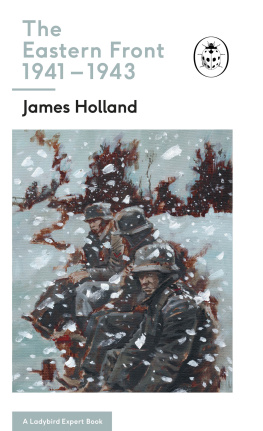
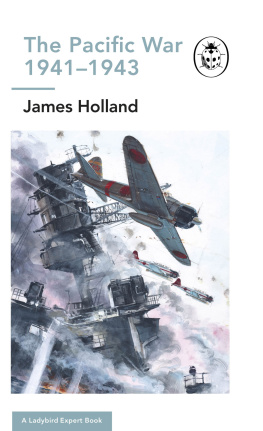
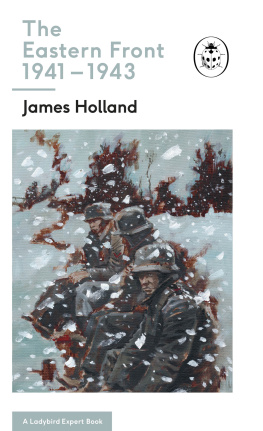
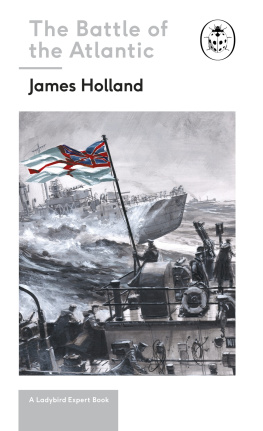

 A XIS UNITS
A XIS UNITS
 Planning in Lascaris, Malta
Planning in Lascaris, Malta 


 Patton on the beach at Gela
Patton on the beach at Gela 



 Primosole Bridge from the air
Primosole Bridge from the air 



 6th West Kents in Adrano
6th West Kents in Adrano 



